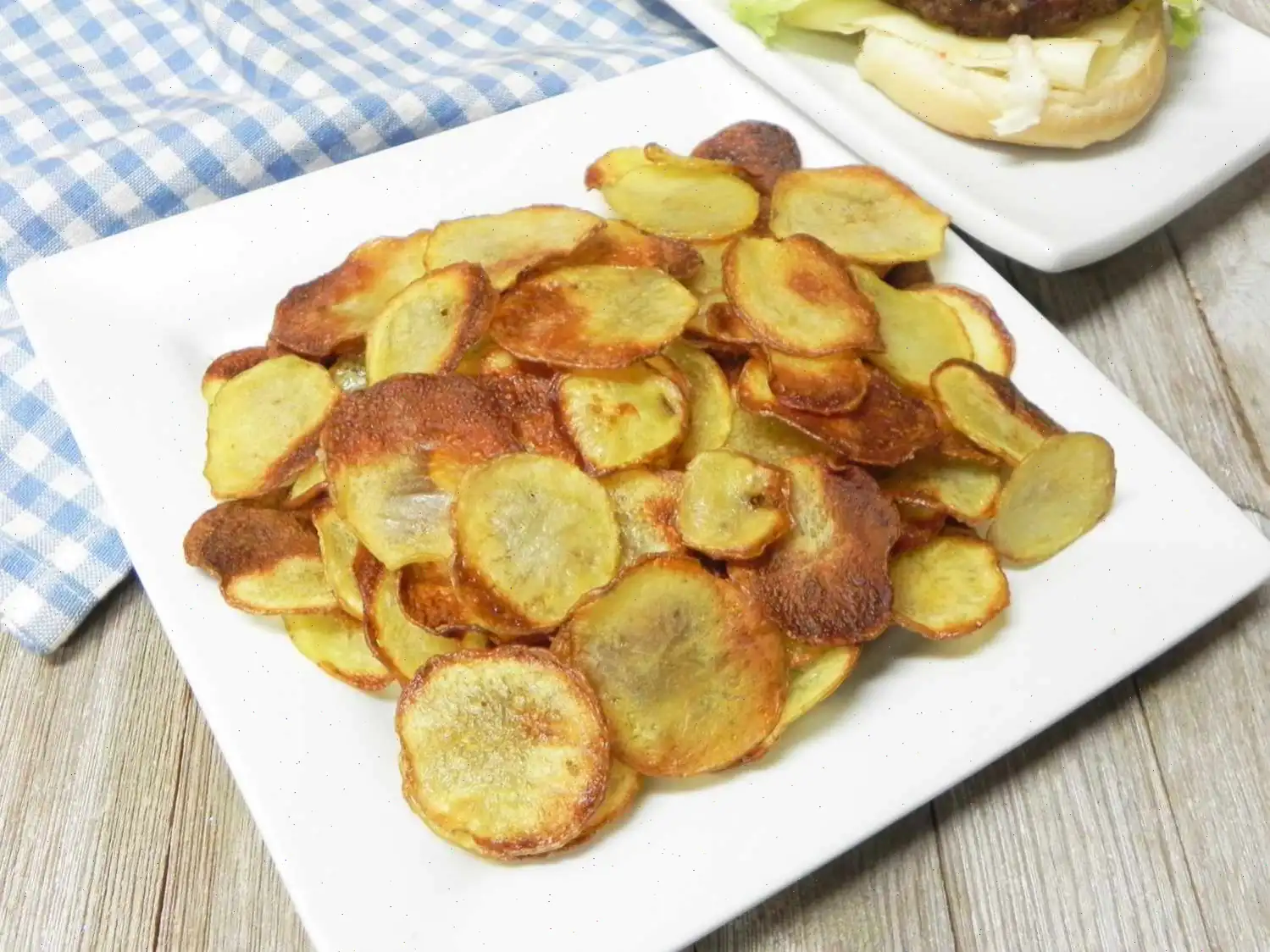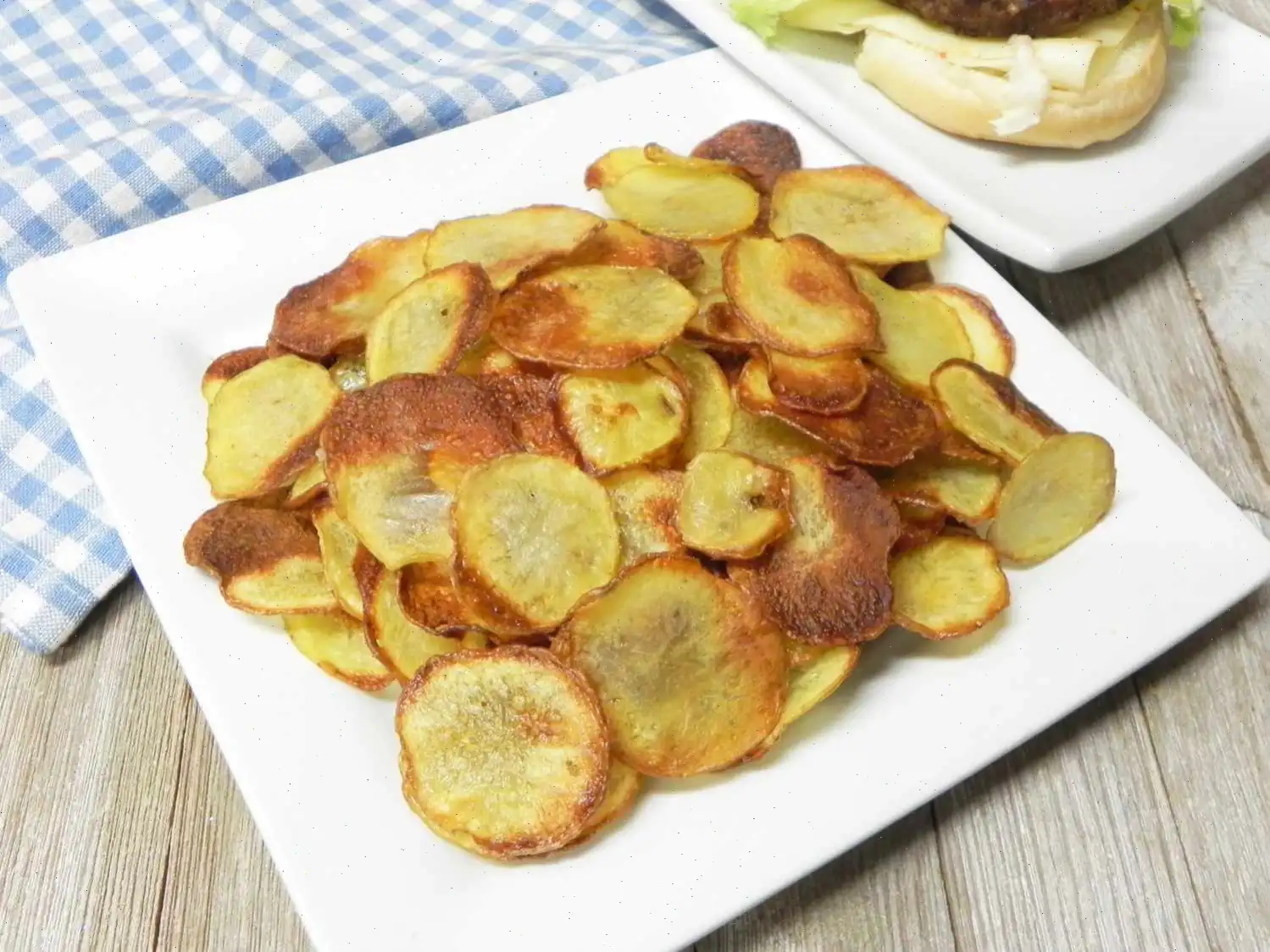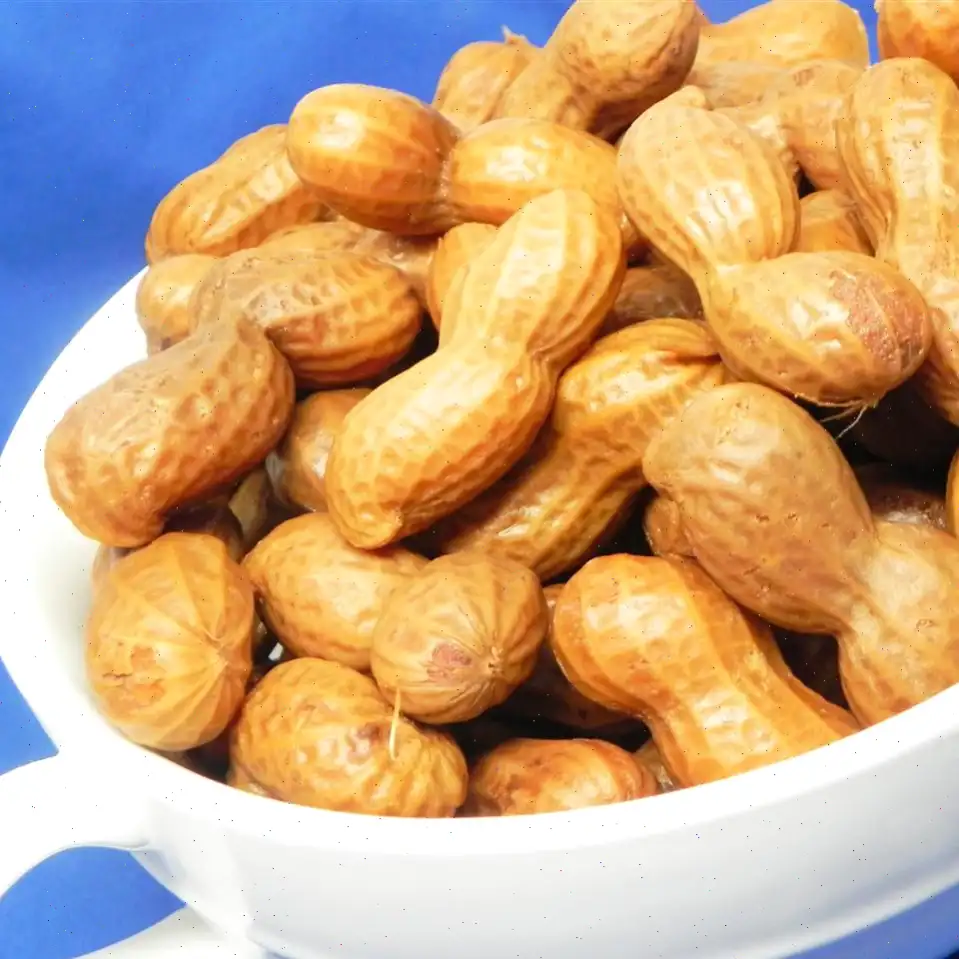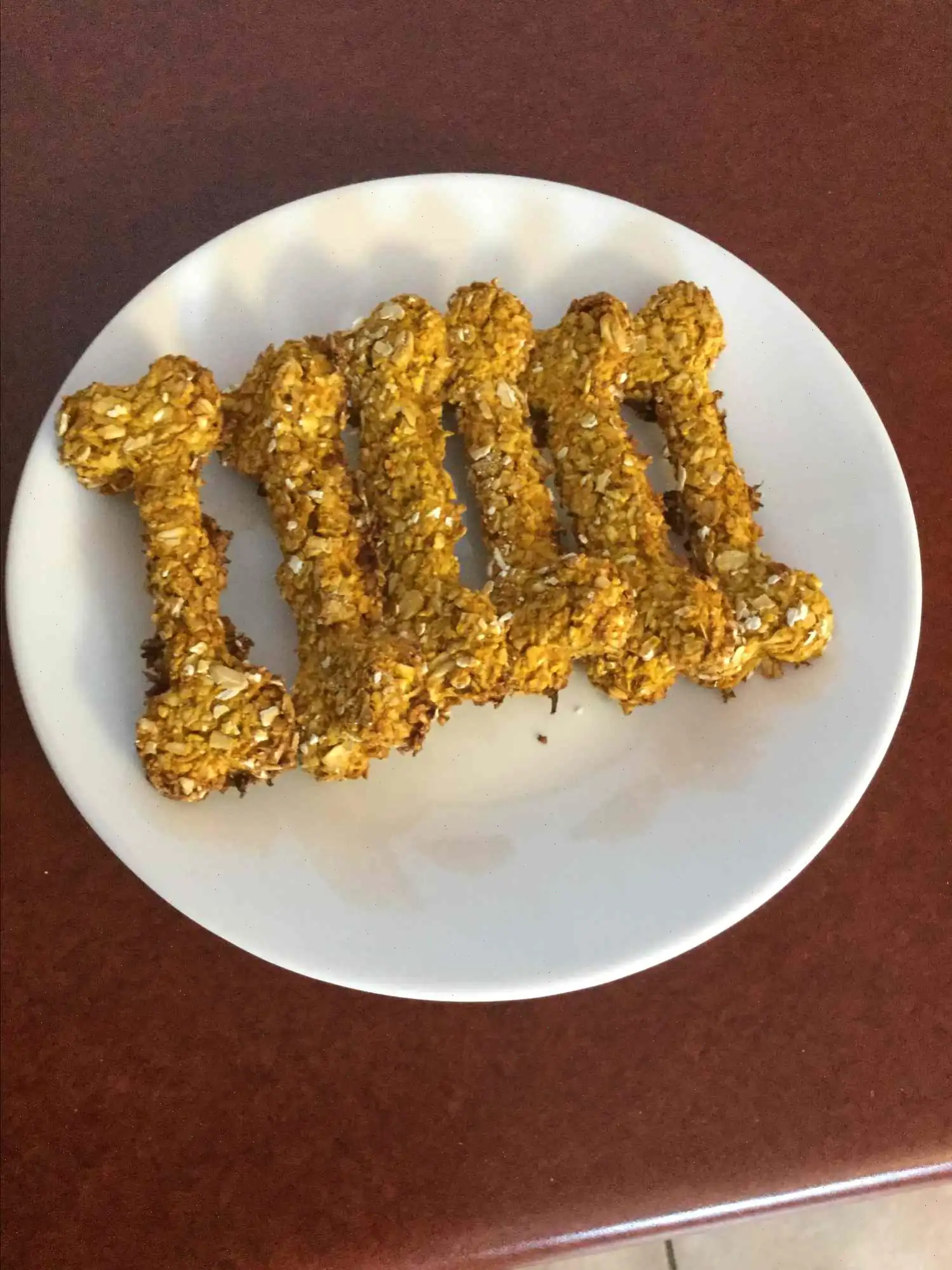
Baked Potato Chips Recipe
Ingredients:
- 1 pound Yukon gold potatoes
- 2 teaspoons olive oil
- 1/2 teaspoon sea salt
Directions:
- Preheat the oven to 400F (200C). Line 2 baking sheets with paper towels.
- Using a mandoline, slice the potatoes on the thinnest setting, about 1/8-inch thick. Arrange the slices on the paper towel-lined baking sheets.
- Place another layer of paper towels over the potato slices. Let the slices sit for 5 minutes to absorb excess moisture.
- Press down gently on the paper towels to remove any remaining moisture. Discard the paper towels.
- Transfer the potato slices to a large bowl. Add the olive oil and sea salt. Gently stir to coat the potatoes evenly.
- Line the baking sheets with parchment paper. Spread the potato slices in a single, even layer on the sheets.
- Bake in the preheated oven for 10 minutes. Using tongs, flip each potato chip over.
- Continue baking until the chips are golden, about 10 minutes more.
- Remove the chips from the oven and let them cool for 5 minutes. As they cool, they will become crispier.
Nutrition Facts (per serving):
| Calories | 125 |
| Total Fat | 2g |
| Saturated Fat | 0g |
| Cholesterol | 0mg |
| Sodium | 157mg |
| Total Carbohydrate | 24g |
| Dietary Fiber | 2g |
| Total Sugars | 1g |
| Protein | 3g |
| Vitamin C | 11mg |
| Calcium | 17mg |
| Iron | 1mg |
| Potassium | 607mg |
* Percent Daily Values are based on a 2,000-calorie diet. Your daily values may be higher or lower depending on your calorie needs.
History of Potato Chips
Potato chips, a beloved snack worldwide, trace their origins back to the United States in the early 19th century. The story goes that in 1853, a chef named George Crum at the Moons Lake House in Saratoga Springs, New York, created the first potato chips. The dish was invented after a customer complained about thick-cut fries. To appease him, Crum sliced the potatoes paper-thin, fried them, and salted them. The crispy chips became an immediate hit, and they soon spread across the nation, eventually becoming a staple in snack aisles globally. Over time, different versions and flavors of potato chips evolved, with baked versions emerging as a healthier alternative to the traditional fried chips.
Regional Variations of Potato Chips
Potato chips are enjoyed across the globe, with each region putting its unique twist on the snack. In the United Kingdom, crisps (as they are called there) are often made with thicker slices and come in a variety of flavors, such as salt and vinegar, prawn cocktail, and cheese and onion. In the United States, potato chips are typically thinner and are known for their wide variety of flavors, from classic barbecue to sour cream and onion. The baked potato chips recipe, like the one detailed here, is particularly popular in the U.S. as a healthier alternative, offering the same satisfying crunch without the added fat from deep frying.
How Baked Potato Chips Differ from Fried Chips
Although both baked and fried potato chips are deliciously crunchy, the key difference lies in the cooking method. Fried chips are immersed in hot oil, which results in a much higher fat content. On the other hand, baked chips are prepared by cooking potato slices in an oven, requiring only a small amount of oil. This process reduces the fat and calorie content, making baked chips a healthier option for those watching their diet. While fried chips are often crisp and oily, baked chips have a lighter, less greasy texture that highlights the natural flavor of the potatoes. Additionally, baked chips tend to be less salty, as they aren't submerged in oil, which can absorb seasoning more effectively.
Where Are Potato Chips Typically Served?
Potato chips are commonly served as a snack or appetizer in various settings, from casual get-togethers to formal events. In the U.S., chips are often seen at barbecues, parties, and alongside sandwiches or burgers. In the UK, crisps are a popular addition to lunchboxes and are frequently enjoyed with afternoon tea. Baked potato chips, in particular, can also be served as a healthier alternative at parties or as a side dish in a light meal. They are versatile enough to pair with a range of dips, such as guacamole, salsa, or a creamy ranch dressing. Whether at a family gathering, picnic, or packed lunch, these chips offer a guilt-free option for satisfying snack cravings.
Interesting Facts About Potato Chips
- Potato chips were originally invented as a way to make use of "imperfect" potatoes, which were too small or too irregular in shape to sell as whole potatoes.
- The worlds largest bag of potato chips weighed 5,000 pounds (2,267 kg) and was made by the Pringles brand in 1995 as part of a promotional event.
- There are over 200 different varieties of potato chips sold worldwide, with flavors ranging from traditional options like salt and vinegar to more exotic ones like truffle or dill pickle.
- In 2006, scientists at the University of Minnesota discovered a method to make potato chips with 50% less fat by using a specially developed oven.
- The phrase "potato chip" was first used in print in the 1860s, shortly after their invention in the mid-1800s.
Conclusion
Baked potato chips offer a flavorful, crispy, and healthier alternative to traditional fried chips. Their simple preparation method and versatile nature make them perfect for any occasion. Whether you are looking to recreate a classic snack or experiment with different seasonings, baked potato chips never fail to deliver a satisfying crunch. With a rich history, regional variations, and fascinating facts about the snack, its easy to see why potato chips have become a worldwide favorite.
FAQ about Baked Potato Chips Recipe
Comments
Joseph Rodriguez
07/31/2024 06:18:48 AM
Perhaps the choice of potato variety does make a difference. I opted for russet potatoes and unfortunately, they ended up burning during the second 10 minutes of cooking. The flavor turned out to be too bland for our liking. If the potatoes are already crispy after the initial 10 minutes, it's best to remove them at that point. If they're not quite done yet, I recommend checking them every 2 minutes or so, as they tend to burn quickly.








